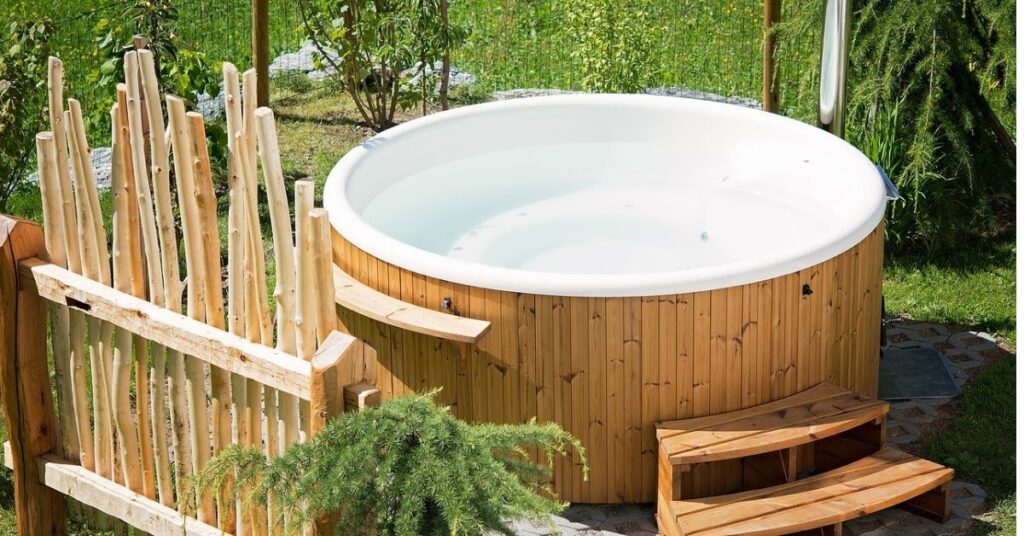In this post, we explore the history of the hot tub, from its beginnings as a Roman invention to its modern-day use in homes and spas worldwide.
We're all familiar with the term "hot tub"—it's a popular spa treatment that's used to relax sore muscles, ease tension, and enjoy a soothing soak. But who invented the hot tub? How did it get started? And what's the best way to make the most of it? Let's explore the history of the hot tub, from its origins in ancient Rome to its modern-day use in homes and spas worldwide.
How hot tubs came into existence
The history of hot tubs is a bit murky, but it is believed that the ancient Romans created the first hot tub. But where did they get this idea of hot tubs? Let's go back to ancient times, beginning with Ancient Egypt.

- Ancient Egypt – 2000 B.C. As far back as 2000 B.C., ancient Egyptians were among the first to widely adopt the hot tub's power for its therapeutic values. They embraced cleanliness and were known to bathe up to four times a day. The wealthy even had bathing rooms inside their homes as early as 4000 years ago!
- The Greeks – 1500 B.C. The Ancient Greeks understood the therapeutic value of warm water and built pools around volcanic springs to capture the warm, mineral-rich water for relaxation and healing. Later, they refined these structures for entertainment as well as bathing. A famous example was during 600 B.C. when King Phraortes of Persia demanded that a hot tub be built from solid granite.
- Roman Baths – 200 B.C. Romans took the spa to the next level by engineering large, elaborate baths. These facilities included hot and cold baths, saunas, a gym, and massage. Public baths fell out of fashion in the Western world with the fall of Rome, but reemergence in the 18th and 19th centuries saw the restoration and rebuilding in Bath, England.
From wooden hot tubs to fiberglass and acrylic spas
In the 1940s, wooden hot tubs were popular. Returning from Japan after WWII, American troops brought back the bathing culture of Onsen and the wooden ofuro tubs. Using discarded winery equipment like barrels and vats, people began creating wood-fired hot tubs in the 1960s with varied success, but they were leaky and harbored bacteria, algae, and mold.


In the 1950s, plastic became more popular due to health concerns over wood fumes, followed by fiberglass in the 1960s. In 1956 the first portable hydrotherapy pump was invented, sparking the hot tub industry. American-made hot tubs have improved greatly since then, with vinyl ester resin spas becoming popular in the 1970s and 1980s
Jacuzzis and modern hot tubs
Hot tubs we know today are a product of many years of innovation and invention. Have you ever wondered how the Jacuzzi became synonymous with a hot tub? It's actually the name of its inventor, Roy Jacuzzi. He invented the first commercially available hot tubs based on the insertion of a swimming pool pump into a bath.


The idea of placing an "aerating pump" into the bath came from Candido, a machinist who emigrated from Italy in 1903 to the U.S. with barely a grammar school education as a way to provide relief to his 15-month son who suffered from rheumatoid arthritis pain.
Roy Jacuzzi is credited with taking a family business based in Walnut Creek, CA, and being the first to market a self-contained whirlpool bath system commercially. His jacuzzi tubs are the precursor to the hot tub and have been on the market since 1970.
Today we have portable hot tubs and inflatables in many different shapes and sizes with exciting and cool features like adjustable seats, LED lighting, Bluetooth speakers, customizable pump, and jet system, allowing for a more pleasurable and immersive experience. And, with so many options to choose from, you can easily find something that fits your needs and budget.
Conclusion
Portable spas have come a long way since the first people stepped into natural warm springs for a soak. Hot tubs continue to grow in popularity for their relaxing and calming effects and have been instrumental in transforming society.
